A concave mirror of focal length 20cm is cut into two parts from the middle and the two parts are moved perpendicularly by a distance 1cm from the previous principal axis AB .find the distance between the images formed by the two parts?
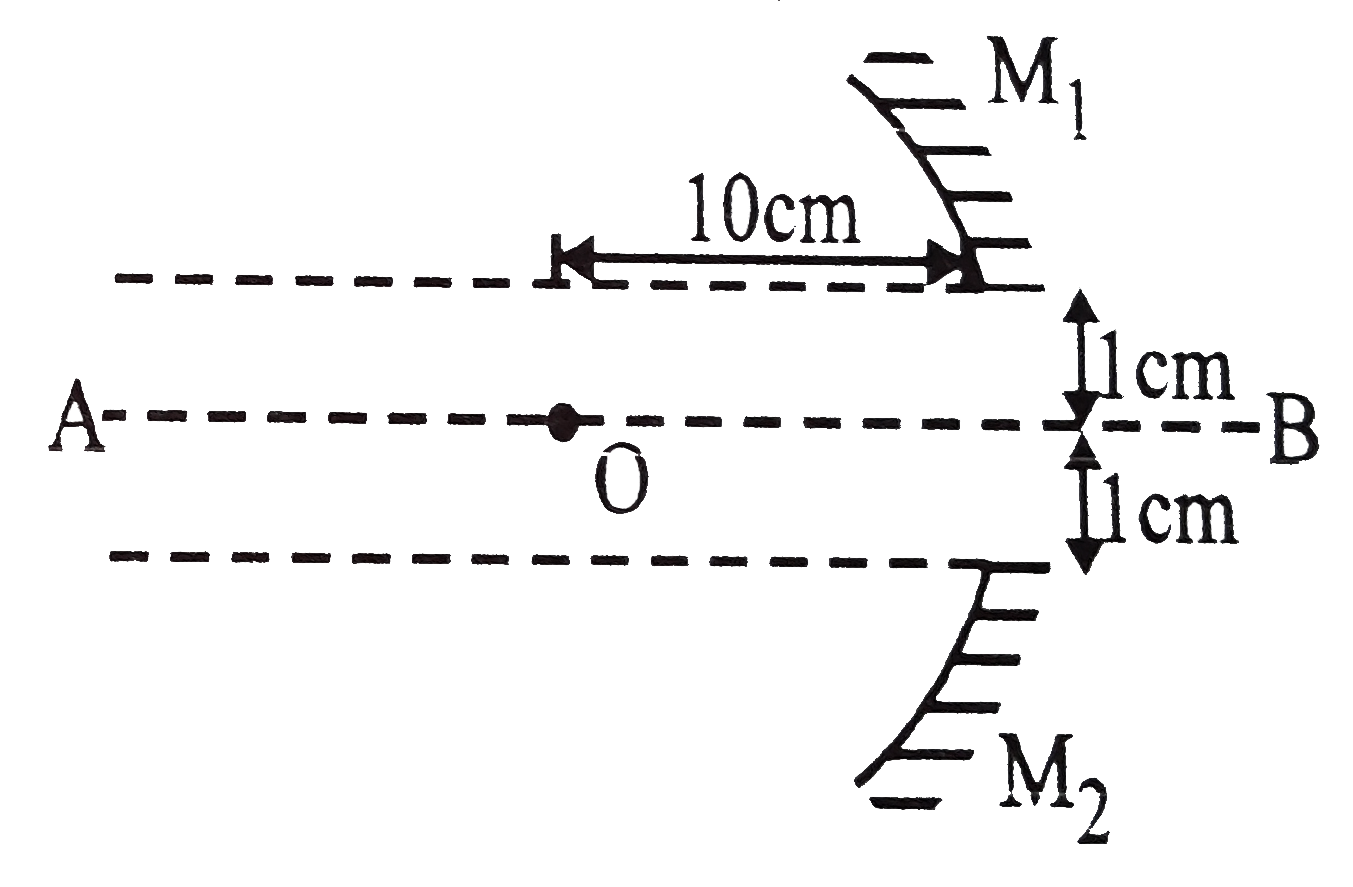
2 mm
6mm
3mm
4mm
The correct Answer is:A
For M1:u=−10cm
f=-20 cm , h0=−0.1cm
v=200−10+20=20010⇒v=20cm
m=−vu⇒h1h0=+20+10
⇒h1=2×−0.1=−0.2,h1=−2 mm
For m2=−20−10=2⇒h1=0.2cm=2mm
Topper's Solved these Questions
- BOOK - ALLENCHAPTER - GEOMETRICAL OPTICSEXERCISE - EXERCISE-244videos
GEOMETRICAL OPTICS
- BOOK - ALLENCHAPTER - GEOMETRICAL OPTICSEXERCISE - EXERCISE-312videos
GEOMETRICAL OPTICS
- BOOK - ALLENCHAPTER - GEOMETRICAL OPTICSEXERCISE - EXERCISE - 05 (B) (ASSERTION & REASON )9videos
GEOMETRICAL OPTICS
- BOOK - ALLENCHAPTER - CURRENT ELECTRICITYEXERCISE - EX.II66videos
CURRENT ELECTRICITY
- BOOK - ALLENCHAPTER - GRAVITATIONEXERCISE - EXERCISE 49videos
GRAVITATION
Similar Questions
A concave mirror forms real image of a point source lying on the optical axis at a distance of 50cm from the mirror. The focal length of the mirror is 25cm. The mirror is cut in two, and its halves are drawn at a distance of 1 cm apart in a direction perpendicular to the optical axis.
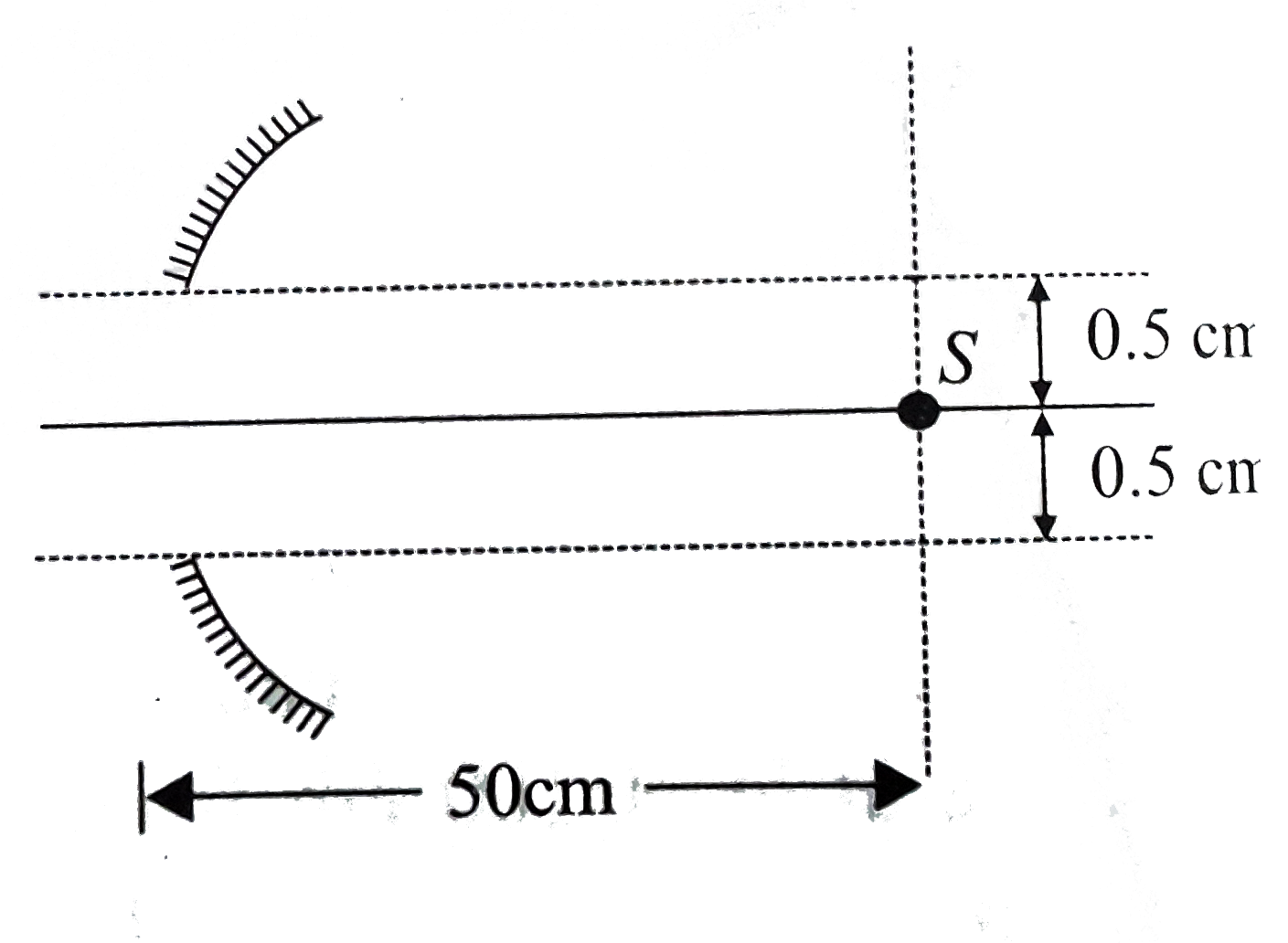
Q. The distance between the two images formed by the two halves of the mirror isView SolutionA particle goes in a circle of radius 2.0 cm. A concave mirror of focal length 20 cm is placed with its principal axis passing through the centre of the circle and perpendicular to its plane. The distance between the pole of the mirror and the centre of the circle is 30 cm. Calculate the radius of the circle formed by the image.
View SolutionA symmetrical converging convex lens of focal length 10cm & diverging concave symmetrical lens of focal length −20cm are cut from the middle and perpendicularly and symmetrically to their principal axis. The parts thus obtained are arrenged as shown in the figure. Find the focal length (in cm) of this arragement
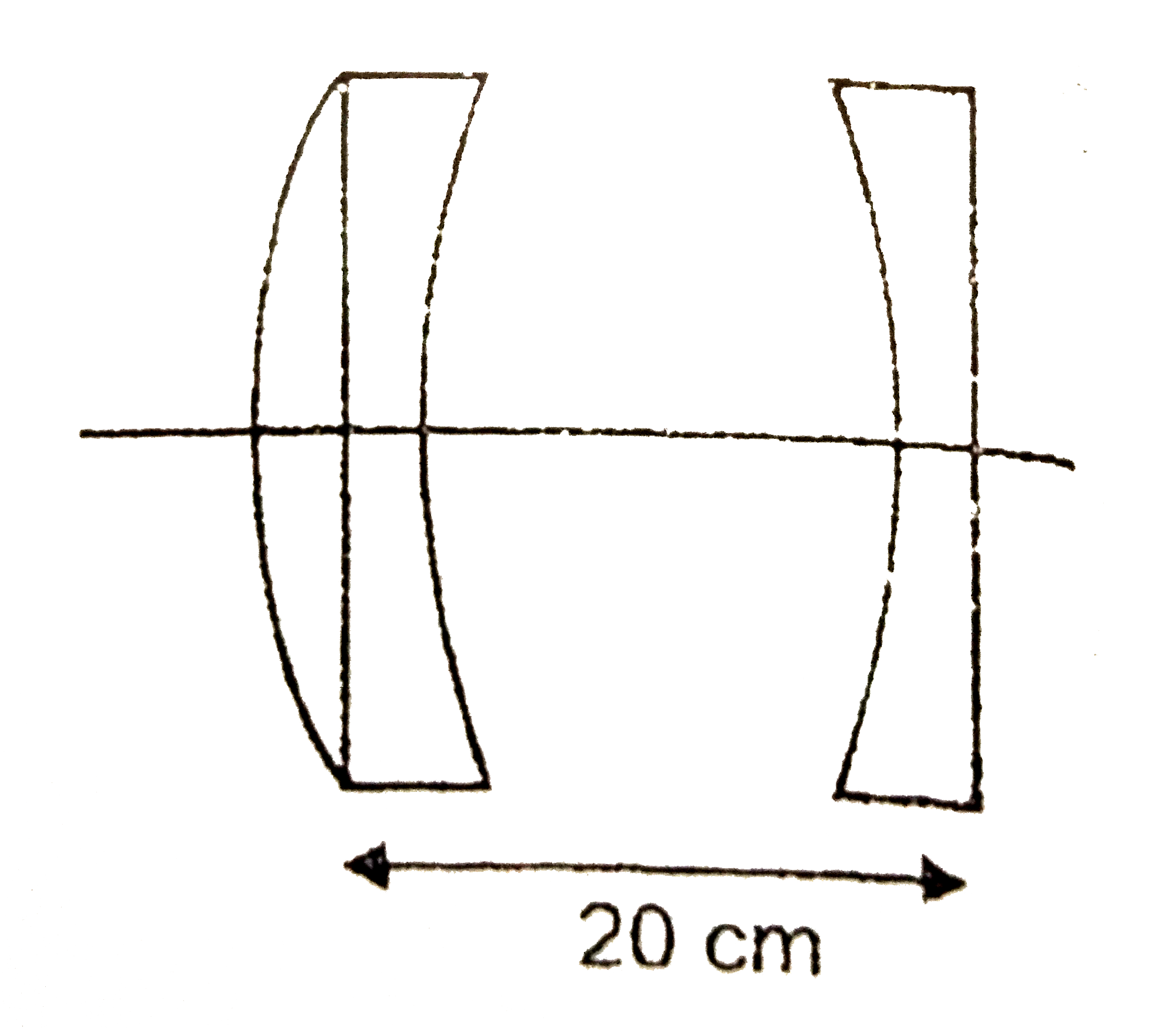 View Solution
View SolutionAn object is at 20 cm from a concave mirror of focal length 10 cm, the nature of image is
View SolutionConcave mirror forms the real image of a point source lying on the optical axis at a distance of 50 cm from the mirror. The focal length of the mirror is 25 cm. The mirror is cut into and its halves are drawn a distance of 1 cm apart in a direction perpendicular to the optical axis. How will the image formed by the halves of the mirror be arranged?
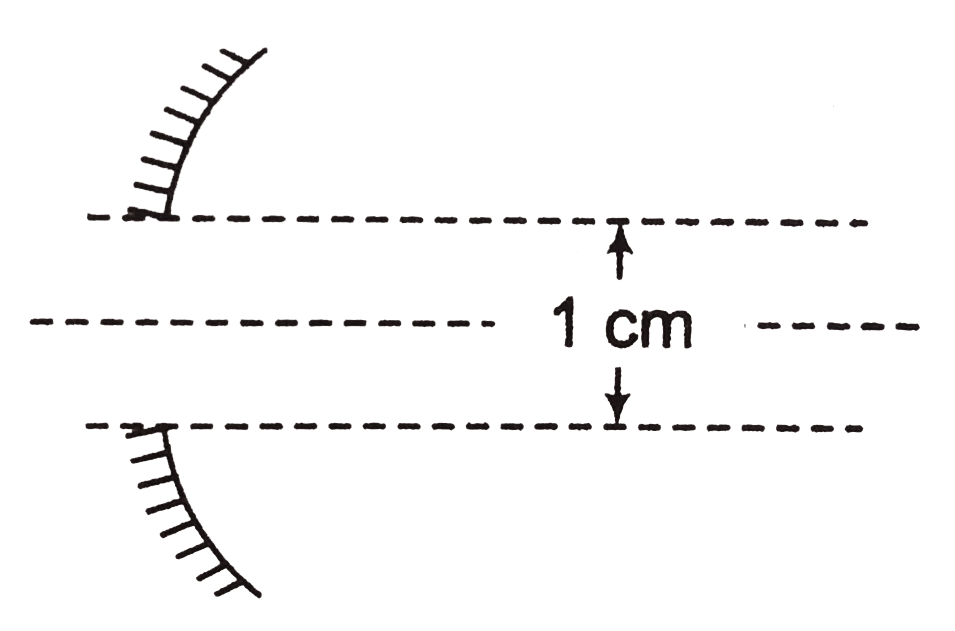 View Solution
View SolutionA point object is placed at a distance 20 cm from the focus of a concave mirror of radius of curvature 20 cm. Find the distance (in cm) of the image from the focus.
View SolutionA concave mirror forms an image of the sun at a distance of 12 cm from it.
View SolutionA point object is placed 60 cm from the pole of a concave mirror of focal length 10 cm on the principal axis.
Find:
a. the position of image.
b. If the object is shifted 1 mm towards the mirror along principal axis, find the shift in image. Explain the result.View SolutionA concave mirror forms real image of a point source lying on the optical axis at a distance of 50cm from the mirror. The focal length of the mirror is 25cm. The mirror is cut in two, and its halves are drawn at a distance of 1 cm apart in a direction perpendicular to the optical axis.
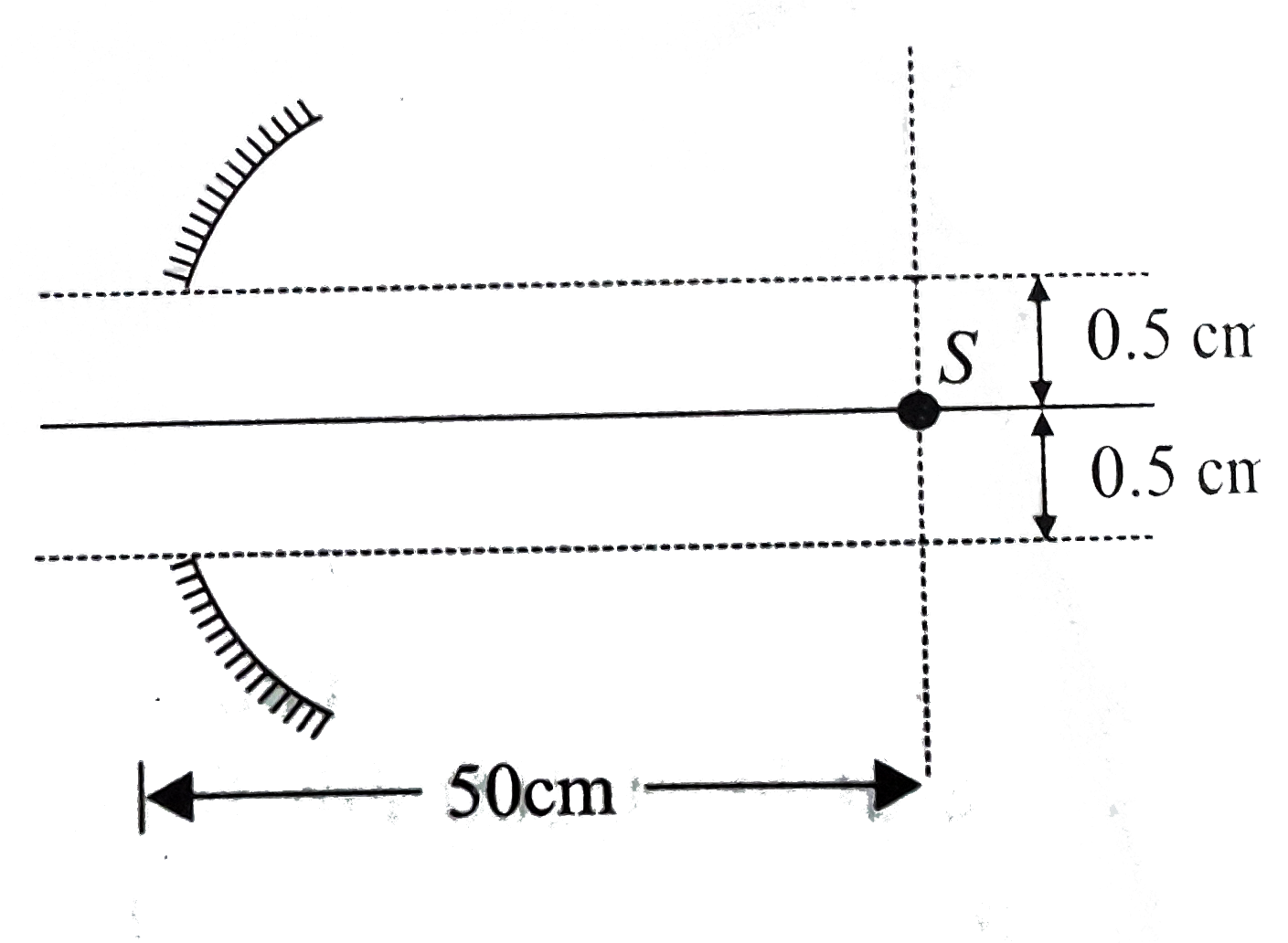
Q. In the given situation, if the two halves are each rotated (before being separated) about S by 90∘, with reference to original position, then the distance between the two images will be
 View Solution
View SolutionAn equi-convex lens of μ=1.5andR=20cm is cut into two equal parts along its axis. Two parts are then separated by a distance of 120cm (as shown in figure). An object of height 3mm is placed at a distance of 30cm to the left of first half lens. The final image will form at
 View Solution
View Solution

